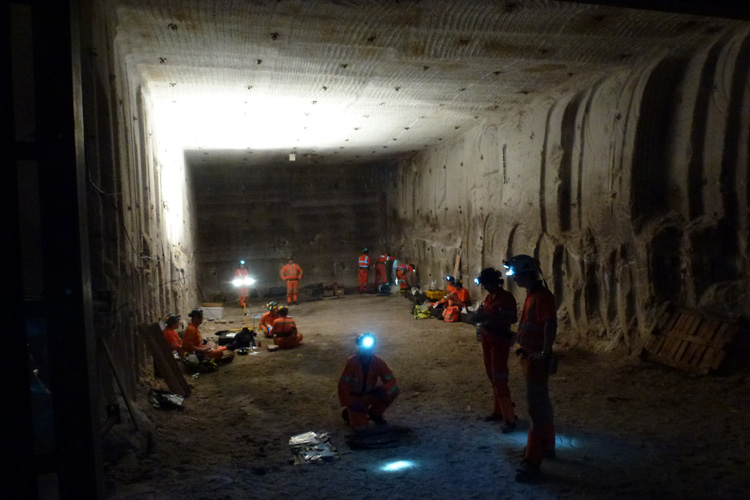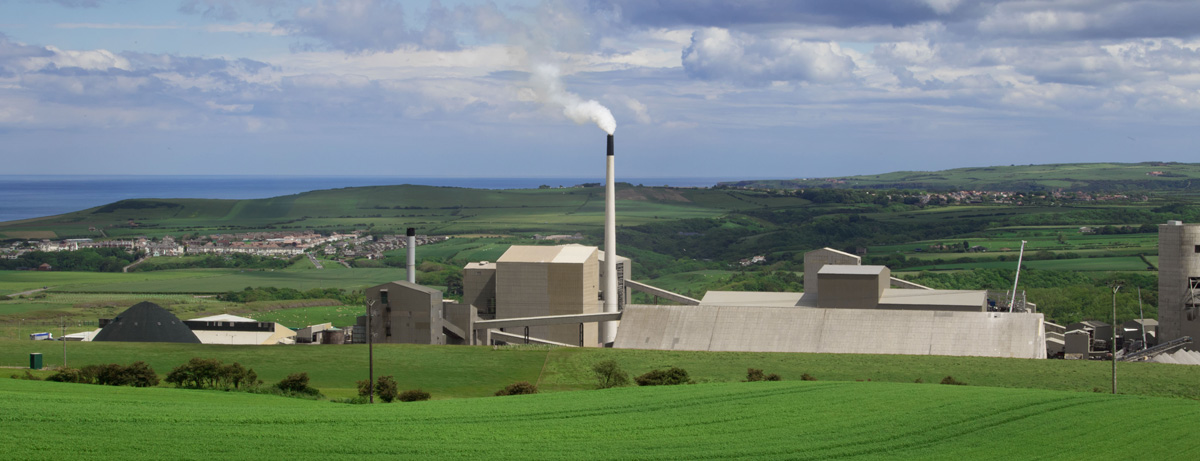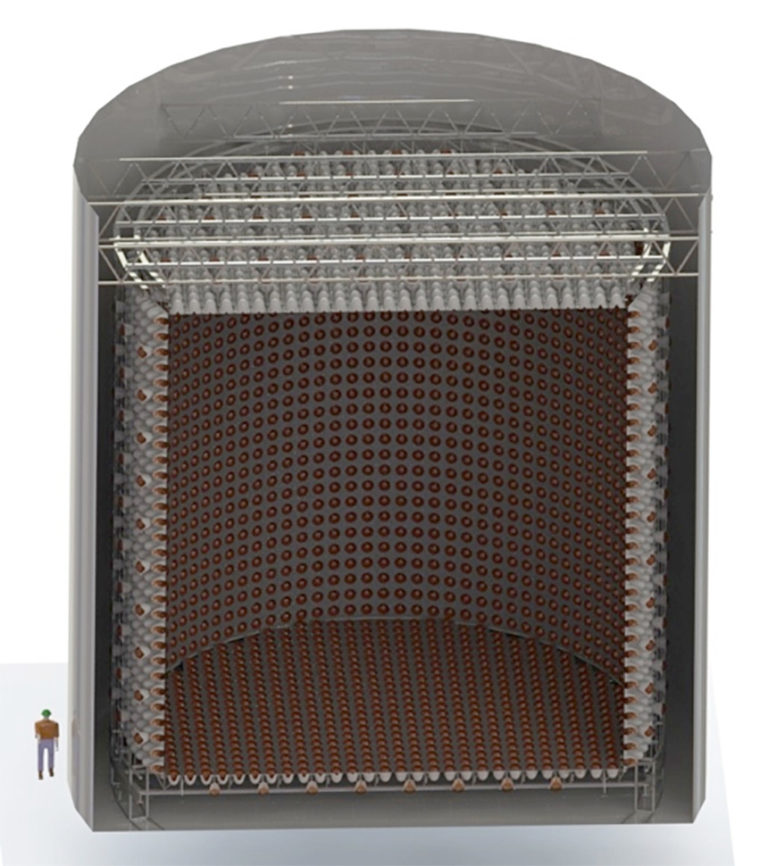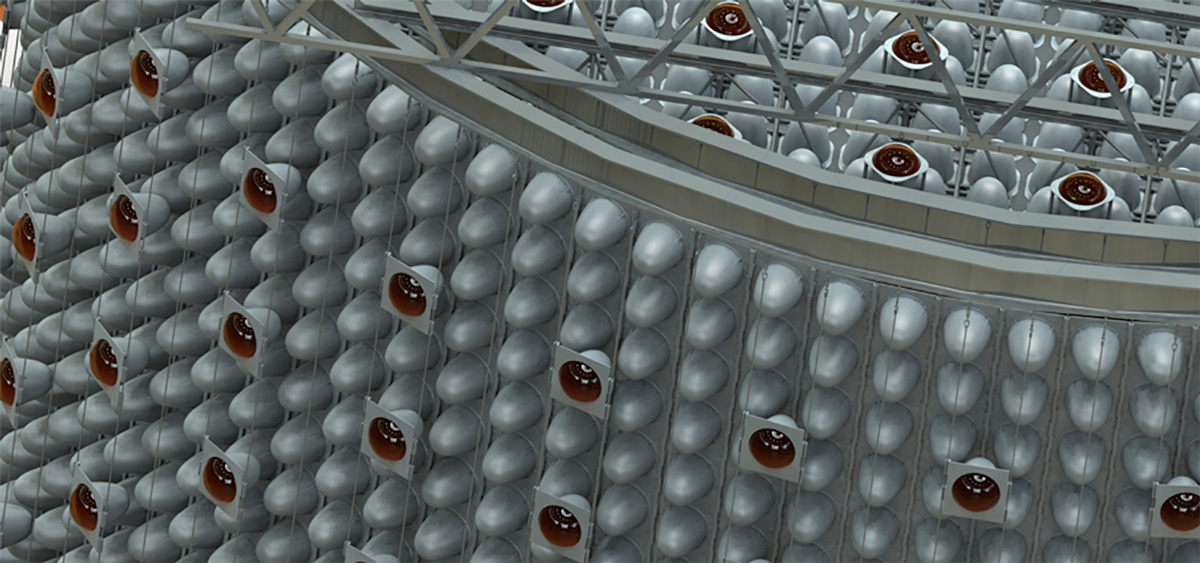First large-scale nuclear reactor monitor will boost neutrino physics
A new U.S. Department of Energy project to develop the first detector able to remotely monitor nuclear reactors will also help physicists test the next generation of neutrino observatories.

Nuclear reactions produce telltale antineutrinos – the antimatter counterpart of neutrinos. The new detectors will be designed to measure the energy of such antineutrinos and the direction from which they come, allowing monitoring of reactors from a distance of 25 kilometers to verify nonproliferation agreements. This project will lay the groundwork for larger detectors capable of monitoring reactor operations from a distance of several hundred kilometers, helping nations track or restrict the production of fissile materials that can be used in nuclear weapons.
But physicists are also interested in detecting neutrinos and antineutrinos to discover the basic laws of the universe, in particular to learn why the universe today is composed mostly of normal matter with very little antimatter, when both should have been made in equal amounts during the Big Bang.
“These neutrino observations have very broad-ranging implications; they could help us explain how we came to exist,” said Gabriel Orebi Gann, an assistant professor of physics and faculty scientist at the Lawrence Berkeley National Laboratory who is the UC Berkeley principal investigator for the new detector.
The initial project is called Watchman, for WATer CHerenkov Monitor of ANtineutrinos, and will be built by a large collaboration between researchers in the United States and United Kingdom, led by Lawrence Livermore National Laboratory. UC Berkeley and the Berkeley Lab are members of the collaboration, dubbed the Advanced Instrumentation Testbed, or AIT, which is funded by the DOE’s National Nuclear Security Administration.

Subject to final approval by mine authorities, Watchman will be constructed at the site of the Boulby Underground Laboratory, an existing United Kingdom government-funded deep underground science facility operating in a working potash, polyhalite and salt mine (Boulby Mine) located on the northeast coast of England. By its projected operational start in 2023, it will consist of 3,500 tons of liquid, mostly water mixed with the element gadolinium, that will be tuned to detect interactions of antineutrinos emitted from a nuclear reactor at the Hartlepool complex 25 kilometers away.
These antineutrinos will interact with protons in the water target to produce positrons, the antimatter partners of electrons, which produce light in the detector when they travel faster than the speed of light in the liquid – the equivalent of a sonic boom, so-called Cherenkov light. The intensity of the light tells scientists the energy of these positrons, which should match predictions.
Neutrinos not very interactive
Neutrinos and antineutrinos are among nature’s most elusive particles, passing though material, including the entire Earth, without interacting with any other matter. They travel at nearly the speed of light, and the scientists who discovered that they have a slight mass won the Nobel Prize in Physics in 2015.

While the first phase of Watchman will use today’s detector technology, the second phase will deploy several advanced technologies to improve the sensitivity to low-energy antineutrinos. These include water-based liquid scintillators and fast photo-sensors and light concentrators to allow discrimination between flashes of light separated by a few hundred picoseconds – 10 times better than achieved by today’s photomultiplier tubes.
“This demonstration will lay the groundwork for larger detectors that would be required to monitor or discover small reactors at distances of up to several hundred kilometers,” said Adam Bernstein, AIT principal investigator and an LLNL physicist.
For Orebi Gann, AIT is an opportunity to test new and more sensitive detectors for a future neutrino observatory that has been called Theia, after the Titan goddess of light. Theia is projected to be a 50,000-ton tank of water-based liquid scintillator with radioactive metals added to enhance neutrino interactions and fast photosensors, plus other state-of-the-art technology.
“I am very excited to contribute to the AIT and Watchman because it is a really important step on the road towards Theia,” said Orebi Gann, who has been involved not only with the Sudbury Neutrino Observatory in Canada, where the neutrino mass was first detected, but also its successor, SNO+.
Is the neutrino its own antiparticle?
The major question of neutrino physics today is whether the neutrino is its own antimatter particle. That is, are the neutrino and antineutrino the same thing? If this were true, it would provide a way to explain the matter-antimatter asymmetry in the universe: it would allow the existence of new and very heavy neutrinos that would have been around only after the Big Bang, and could have decayed preferentially into matter instead of antimatter.

“If we don’t see it, if we see that neutrinos are not their own antiparticles, that is equally huge, because that says that there is something else that differentiates matter from antimatter other than electric charge,” Orebi Gann said, “that there is some other symmetry that we don’t know about that differentiates the neutrino from the antineutrino.”
The key test lies in observations of double beta decay, the rarest form of radioactive decay in which two neutrons in the nucleus of an atom spontaneously decay, each creating a proton, an electron and an antineutrino. If neutrinos and antineutrinos are the same particle, in some instances of this rare event the two neutrinos/antineutrinos would annihilate one another inside the nucleus and experimenters would see no antineutrinos emerging.
Thus, physicists are looking for events – so-called neutrinoless double beta decays – involving two energetic electrons carrying all the energy of the double beta decay, and nothing else.
SNO+ employs a liquid scintillator target that produces about 50 times more light as electrons plow through than is produced by the Cherenkov effect, thus boosting chances of detecting neutrinoless double beta decay. The goal of the Advanced Instrumentation Testbed, in particular phase 2, is to test a combination of Cherenkov detection and scintillation for the next-generation neutrino detector, Theia.
“With Theia, we want to combine the benefits of a target medium that produces a lot of light, like scintillation, with a medium in which we can also see the Cherenkov light — the directional light,” Orebi Gann said. “Together, they will give you a directional, low-threshold detector that produces a fantastic signal-to-background discrimination for a wide range of neutrino physics, as well as exciting topics such as proton decay.”
Though Watchman’s focus is non-proliferation, it would also be capable of detecting antineutrino bursts from supernovas, and perhaps neutrinos produced in Earth itself, so-called geoneutrinos.
“Watchman, and more broadly the AIT, offer examples of the powerful synergy that can be gained when tools developed for basic science are applied in nonproliferation contexts,” Bernstein said.
The AIT consortium consists of LLNL, Berkeley Lab, Brookhaven National Laboratory, the United Kingdom’s Atomic Weapons Establishment, eight U.S. universities – UC Berkeley, UC Davis, UC Irvine, Iowa State, Penn State, University of Pennsylvania, University of Michigan and University of Hawaii – and the University of Sheffield.
NOTE: The title has been changed to reflect the fact that there was at least one previous, small-scale experimental nuclear reactor monitor.
